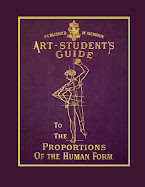

Here is a new ebook Lessons in Figure Painting in Water Color, published in 1881.
Each lesson consists of a written description of the colors used and their manner and order of application plus two color plates showing the painting in two stages of completion.
This ebook, like the other Cassell Books (A Course of Painting in Neutral Tint, A Course of Sepia Painting, and A Course of Water Colour Painting, By R. P. LEITCH) is a facsimile of an original book which was printed using a method called continuous tone printing.

The effect of the plates is similar to silkscreen printing, but printed with transparent inks. The final product closely approximates the look of an actual water color painting and gives the artist and printer great control over the look and over the finished product.
This ebook, like the other Cassell Books (A Course of Painting in Neutral Tint, A Course of Sepia Painting, and A Course of Water Colour Painting, By R. P. LEITCH) is a facsimile of an original book which was printed using a method called continuous tone printing.

The effect of the plates is similar to silkscreen printing, but printed with transparent inks. The final product closely approximates the look of an actual water color painting and gives the artist and printer great control over the look and over the finished product.


From THE LITERARY WORLD
A Fortnightly Review of Current Literature. 1881 BOSTON, 1881
"The books of which we are now to speak are of novel plan and structure, being intended as guides to children in the art of water-color painting. One is Lessons in Figure Painting , another Flower Painting; their design being to lay before beginners simple instructions in water coloring, with a variety of examples to copy. Each book is, therefore, first, a text-book, short, plain and circumstantial ; and, second, a scrap-book, with pictures inserted on blank pages which the young student is to take as models.
"The lessons in figure painting, which are the more difficult of the two, are from designs by Blanche Mac- Arthur and Jennie Moore, both of whom are medalists of the Royal Academy; and are sixteen in number. Each design is fitted with special and minute directions, which in a measure take the place of a teacher, and which will suffice for any child who has had some practice in the use of the color box. Each subject is presented in two designs, one finished, the other unfinished; thus educating the eye into the separate stages of the work, and enabling it to distinguish between what is fundamental and what is superficial. The flower designs, which compose the second of the two volumes, are by- Edward Hulme, who is perhaps the most noted English flower painter of the day ; are simpler, and of course will demand less of the young student. The usefulness of these books, reinforcing their beauty, is certain to commend them to wide circulation. "
Color Mixing Recipes for Portraits: More than 500 Color Combinations for skin, eyes, lips & hair
Color Mixing Recipes for Portraits: More than 500 Color Combinations for skin, eyes, lips & hair


























































